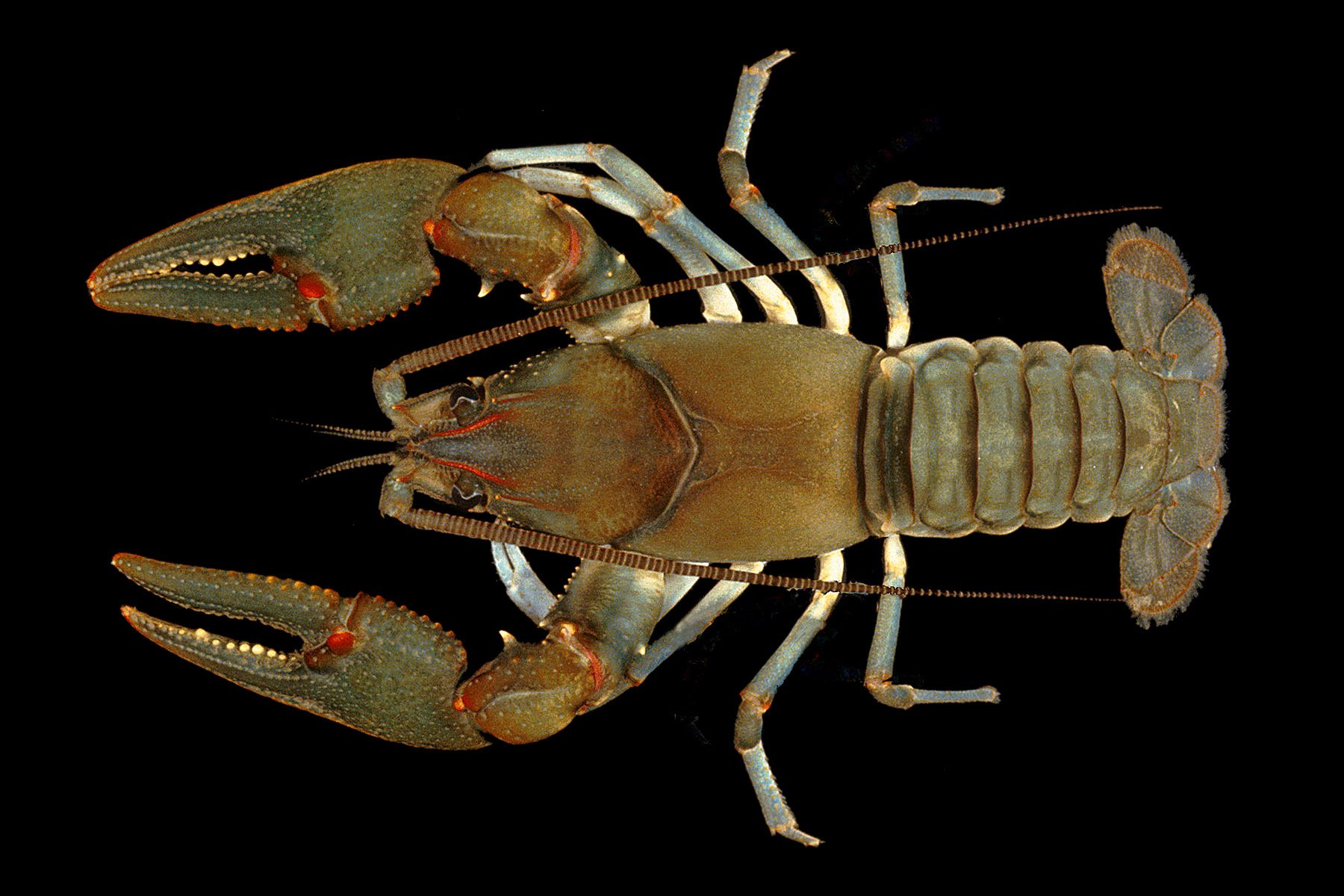Lawsuit Filed to Save Imperiled Appalachian Species From Coal Mining
Lawsuit Filed to Save Imperiled Appalachian Species From Coal ... Center for Biological Diversity


Sued: U.S. Agencies Fail to Protect Imperiled Wildlife from Coal Mining

CHARLESTON, W.Va. — The Center for Biological Diversity and Appalachian Voices today sued the U.S. Office of Surface Mining Reclamation and Enforcement and the U.S. Fish and Wildlife Service for failing to protect highly imperiled wildlife from the devastating harms of coal mining in Kentucky, West Virginia, and Virginia.
Failure to Implement Required Protections for Imperiled Species
The agencies have failed to implement required protections for imperiled species, putting wildlife such as the endangered Guyandotte River crayfish and candy darter and the threatened Big Sandy crayfish at great risk.
Investigation Reveals Breakdown in Protective Measures
The lawsuit stems from an intensive investigation in progress since early 2022. The suit explains that the agencies have failed to ensure that essential protective measures are in place to prevent these federally protected species from going extinct, as the Endangered Species Act requires.
“Our in-depth investigation found a total breakdown in the process designed to protect imperiled wildlife from the disastrous harms of coal mining,” said Perrin de Jong, Southeast staff attorney at the Center for Biological Diversity. “Every state and federal agency responsible for implementing endangered species protections is asleep behind the wheel. If they put as much effort into following the law as they do helping the coal industry dodge its obligations to prevent extinction, these species would be in a much better place today.”
Threats to Imperiled Crayfish Species and Candy Darter
The Center and Appalachian Voices have uncovered hundreds of coal mining facilities in Kentucky, West Virginia, and Virginia that threaten critical habitat for the two imperiled crayfish species and the candy darter — and which lack the required protections for the species and their habitat.
“Better protection for these rivers and creeks doesn’t just help threatened and endangered species, it is also crucial for the long-term well-being of the communities that depend on these important waterways,” said Willie Dodson, Central Appalachian field coordinator for Appalachian Voices. “It’s well past time that regulators do their jobs to ensure that the coal industry abides by the law and reduces water pollution that harms communities as well as at-risk species.”
Federal Oversight and Failure to Implement Protective Plans
West Virginia, Kentucky, and Virginia are responsible for regulating the coal industry within their borders, but that’s subject to federal oversight by the two agencies being sued.
According to a binding biological opinion issued by the Service in 2020, all facilities that could affect listed species or their critical habitat must develop plans and implement sufficient protective measures to avoid the risk of extinction and habitat degradation for protected species before any coal mining may take place.
Nearly three years later, no such protective plans exist for hundreds of mining operations that discharge sediment and other contaminants into waterways designated as critical habitat for these species. Furthermore, dozens of facilities have continued coal mining operations since 2020 without implementing the required protections. The findings constitute a wholesale failure by these federal agencies to implement the requirements of the biological opinion.
Lawsuit Calls for Revising Programs to Protect Imperiled Wildlife
Today’s lawsuit, filed in the U.S. District Court for the District of Columbia, argues that the agencies must revise the program and ensure that effective and enforceable measures are in place to truly protect imperiled wildlife from extinction.
Background
Three Imperiled Species at Risk
Three imperiled species are particularly at risk from these federal failures.
The endangered Guyandotte River crayfish has been wiped out from 93% of its range and now only lives in two creeks in West Virginia. The threatened Big Sandy crayfish has been wiped out from more than 60% of its range and survives in the upper Big Sandy River basin across southern West Virginia, eastern Kentucky, and southwest Virginia. The endangered candy darter has been wiped out from 49% of its range and clings to survival in the Gauley and New River basins in West Virginia and Virginia.
Devastating Impacts of Coal Mining
All three species have suffered from the devastating impacts of coal mining, a primary driver that has pushed them to the brink of extinction.
Scientific studies have linked coal mining to declines in birds, fish, salamanders, crayfish, insects, and freshwater mussels. More than 1 million acres of hardwood forest and more than 2,000 miles of streams have already been destroyed by surface coal mining in Appalachia.
Threats to Communities and Health
Mining also threatens nearby communities with air and water pollution and the risk of flooding. More than 20 peer-reviewed scientific studies have now linked mining pollution in Appalachia to health problems, including an increased risk of cancer, cardiovascular disease, and birth defects.
SDGs, Targets, and Indicators
-
SDGs Addressed or Connected to the Issues
- SDG 15: Life on Land
- SDG 6: Clean Water and Sanitation
- SDG 3: Good Health and Well-being
-
Specific Targets Based on the Article’s Content
- Target 15.1: By 2020, ensure the conservation, restoration, and sustainable use of terrestrial and inland freshwater ecosystems and their services, in particular forests, wetlands, mountains, and drylands, in line with obligations under international agreements.
- Target 6.3: By 2030, improve water quality by reducing pollution, eliminating dumping and minimizing release of hazardous chemicals and materials, halving the proportion of untreated wastewater, and substantially increasing recycling and safe reuse globally.
- Target 3.9: By 2030, substantially reduce the number of deaths and illnesses from hazardous chemicals and air, water, and soil pollution and contamination.
-
Indicators Mentioned or Implied in the Article
- Indicator 15.1.1: Forest area as a proportion of total land area
- Indicator 6.3.2: Proportion of bodies of water with good ambient water quality
- Indicator 3.9.1: Mortality rate attributed to household and ambient air pollution
Table: SDGs, Targets, and Indicators
| SDGs | Targets | Indicators |
|---|---|---|
| SDG 15: Life on Land | Target 15.1: By 2020, ensure the conservation, restoration, and sustainable use of terrestrial and inland freshwater ecosystems and their services, in particular forests, wetlands, mountains, and drylands, in line with obligations under international agreements. | Indicator 15.1.1: Forest area as a proportion of total land area |
| SDG 6: Clean Water and Sanitation | Target 6.3: By 2030, improve water quality by reducing pollution, eliminating dumping and minimizing release of hazardous chemicals and materials, halving the proportion of untreated wastewater, and substantially increasing recycling and safe reuse globally. | Indicator 6.3.2: Proportion of bodies of water with good ambient water quality |
| SDG 3: Good Health and Well-being | Target 3.9: By 2030, substantially reduce the number of deaths and illnesses from hazardous chemicals and air, water, and soil pollution and contamination. | Indicator 3.9.1: Mortality rate attributed to household and ambient air pollution |
Analysis
SDGs Addressed or Connected to the Issues
The issues highlighted in the article are connected to SDG 15: Life on Land, SDG 6: Clean Water and Sanitation, and SDG 3: Good Health and Well-being.
Specific Targets Based on the Article’s Content
The specific targets that can be identified based on the article’s content are:
- Target 15.1: By 2020, ensure the conservation, restoration, and sustainable use of terrestrial and inland freshwater ecosystems and their services, in particular forests, wetlands, mountains, and drylands, in line with obligations under international agreements.
- Target 6.3: By 2030, improve water quality by reducing pollution, eliminating dumping and minimizing release of hazardous chemicals and materials, halving the proportion of untreated wastewater, and substantially increasing recycling and safe reuse globally.
- Target 3.9: By 2030, substantially reduce the number of deaths and illnesses from hazardous chemicals and air, water, and soil pollution and contamination.
Indicators Mentioned or Implied in the Article
The indicators mentioned or implied in the article are:
- Indicator 15.1.1: Forest area as a proportion of total land area
- Indicator 6.3.2: Proportion of bodies of water with good ambient water quality
- Indicator 3.9.1: Mortality rate attributed to household and ambient air pollution
The article discusses the failure to protect imperiled wildlife from the devastating harms of coal mining, which directly relates to SDG 15: Life on Land. The endangered Guyandotte River crayfish, threatened Big Sandy crayfish, and endangered candy darter are mentioned as species at great risk due to coal mining activities. These species’ survival and habitats are essential for the conservation and restoration of terrestrial and inland freshwater ecosystems, as targeted by SDG 15.1.
The article also highlights the pollution and contamination caused by coal mining, which is relevant to SDG 6: Clean Water and Sanitation. The lack of required protections for the imperiled species and their habitats leads to water pollution and degradation. Target 6.3 aims to improve water quality by reducing pollution and hazardous materials, which is directly related to the issues discussed in the article.
Furthermore, the article mentions the health impacts of coal mining pollution, linking it to SDG 3: Good Health and Well-being. The increased risk of cancer, cardiovascular disease, and birth defects associated with mining pollution aligns with Target 3.9, which aims to reduce deaths and illnesses from pollution and contamination.
Behold! This splendid article springs forth from the wellspring of knowledge, shaped by a wondrous proprietary AI technology that delved into a vast ocean of data, illuminating the path towards the Sustainable Development Goals. Remember that all rights are reserved by SDG Investors LLC, empowering us to champion progress together.
Source: biologicaldiversity.org

Join us, as fellow seekers of change, on a transformative journey at https://sdgtalks.ai/welcome, where you can become a member and actively contribute to shaping a brighter future.







